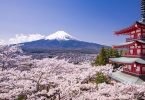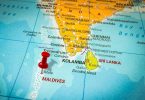TANZANIA (eTN) – The Tanzanian government has agreed to allow uranium mining inside the famous Selous Game Reserve after the United Nations World Heritage Committee approved an application by the Tanzanian government to alter the boundaries of the reserve in order to pave the way for uranium mining.
Tanzanian Minister for Natural Resources and Tourism Mr. Lazaro Nyalandu said the Tanzania government had set out an area covering 350 kilometers within the Selous Game Reserve in the southern Tanzania tourist circuit for extraction of uranium.
In the process to extract this radioactive mineral in the area, Mr. Nyalandu signed a formal memorandum of understanding between Tanzania’s Wildlife Division and Mantra Tanzania Limited, a subsidiary of a Toronto-based uranium mining company and its parent, Russian state-owned nuclear enterprise, Rosatom.
Under the terms of reference, Mantra Tanzania will cooperate and support the Wildlife Division in the Ministry of Tourism to combat poaching in the southern parts of the Selous, a World Heritage Site.
The just-signed memorandum between the two parties will see Mantra Tanzania Limited investing US$800,000 on anti-poaching activities and focus on the development of anti-poaching initiatives which the company (Mantra Tanzania) began last year.
According to the memorandum of understanding seen by eTN, Mantra Tanzania will carry out significant anti-poaching initiatives ranging from game scouts uniforms, equipment and vehicles, specialized training in bushcraft, communications, safety, navigation, and counter-poaching tactics.
Other anti-poaching activities to be carried out by the company include aerial surveillance using light sport aircraft or gyrocopters and trials with unmanned aerial vehicles equipped with thermal night vision cameras, Global Positioning System navigation, and video transmitters.
On top of this, the government of Tanzania said the mine will produce 60 million tons of radioactive and poisonous waste during its 10-year lifespan and up 139 million tons of uranium if a projected extension of the mine is implemented.
Covering over 50,000 square kilometers, the Selous is one of the largest protected wildlife reserves in the world and one of Africa’s last great wilderness areas.
The park in southern Tanzania has large numbers of elephants, black rhinos, cheetahs, giraffes, hippos, and crocodiles, and is relatively undisturbed by humans.
It is one of the largest protected areas in the world and is one of Africa’s last great wildernesses. Until recently, it has been relatively undisturbed by humans, although another plan is in the process to build a hydroelectric dam on the Rufiji River, and elephant poaching has become so rampant in recent years that the park has been listed as one of the worst elephant “killing fields” in Africa by the Environmental Investigation Agency.
The Selous keeps the biggest wildlife concentrations on the African continent, including 70,000 elephants, over 120,000 buffaloes, more than half a million antelopes, and a couple thousand large carnivores, all roaming free in its forests, riverine thickets, steppes, and mountain ranges. Its origins date back to the German colonial times of 1896, making it Africa’s oldest protected area.






















